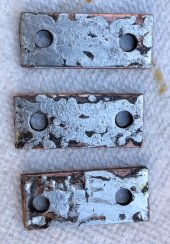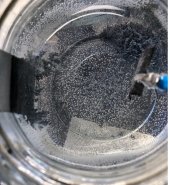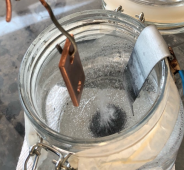chrisski
Solar Boondocker
- Joined
- Aug 14, 2020
- Messages
- 5,171
How do you tin your busbars?
-Solder with MAF torch?
-Solder dip is a solder pot?
-Electroplate?
-Chemical dip like liquid solder?
-Something else?
==========================
Drilled, Cut, and cleaned busbars today. Attempted to tin off the "Soldering" document with a MAF torch per this resource aand no good.

 diysolarforum.com
diysolarforum.com
These are my results:

I attempted this with three of 8 bus bars I made. I finished with 800 grit sand paper and cleaned with 91% alcohol. I heated with a MAF torch without flux (Right) and the middle two with flux. The one on the left, I did not tin at all.
=========================================
I'm stuck on the next step. Liquid solder is pretty tempting since it seems so easy and even though its about $25 for 4 ounces, this will likely be less than I pay for any other way I attempt.
-Solder with MAF torch?
-Solder dip is a solder pot?
-Electroplate?
-Chemical dip like liquid solder?
-Something else?
==========================
Drilled, Cut, and cleaned busbars today. Attempted to tin off the "Soldering" document with a MAF torch per this resource aand no good.

Tin Plating, Nickle Plating or Solder plating Bus bars
To get the downloads, click on the orange button at the top of the screen. This resource has two download files - A file documenting what I did to Tin plate bus-bars - An instructable on how to nickle plate copper. - A short word document on how...
These are my results:

I attempted this with three of 8 bus bars I made. I finished with 800 grit sand paper and cleaned with 91% alcohol. I heated with a MAF torch without flux (Right) and the middle two with flux. The one on the left, I did not tin at all.
=========================================
I'm stuck on the next step. Liquid solder is pretty tempting since it seems so easy and even though its about $25 for 4 ounces, this will likely be less than I pay for any other way I attempt.






